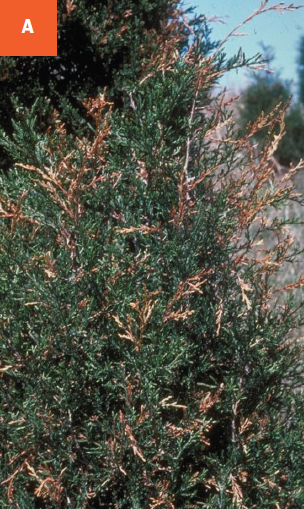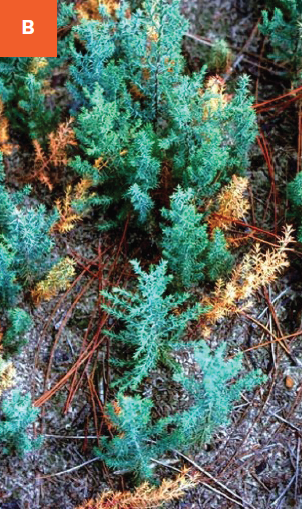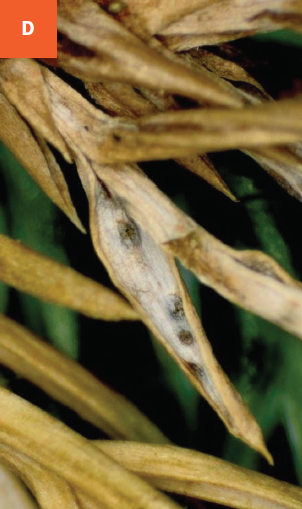Phomopsis Tip Blight
Phomopsis juniperovora (fungus)
HOST Creeping and Rocky Mountain junipers, Douglas-fir, fir, arborvitae, larch
DAMAGE/SYMPTOMS In spring, small grayish lesions appear on the terminal four to five inches of the newest shoots. The lesions enlarge and may girdle and kill the new shoots. Infected branches turn from green to reddish-brown to a grayish color. Small, black, fungal fruiting bodies can be found on the dead branches. This disease can kill the entire plant.
DISEASE CYCLE The fungus survives in infected branches. Spores can be produced in fruiting bodies throughout the growing season, depending on favorable weather conditions. While most infections occur in springtime during wet weather and when new shoots grow, late summer infections may appear when plants are water stressed and over fertilized.
MANAGEMENT Plant resistant juniper species. Prune out and discard affected branches/shoots during dry weather. Make the cut about six inches below visible symptoms and disinfect pruning tools with 70% ethyl alcohol or a standard household disinfectant spray before each cut to minimize spreading the disease. Fungicides with the active ingredient copper or mancozeb can be applied starting in spring when new shoots are growing. Multiple applications may be necessary depending on the weather conditions and the selected product.
A Browning tips on juniper shrub. B Dieback on young evergreen plants. C Close-up of shoot dieback. D Dark fungal fruiting bodies on dead plant tissue.




